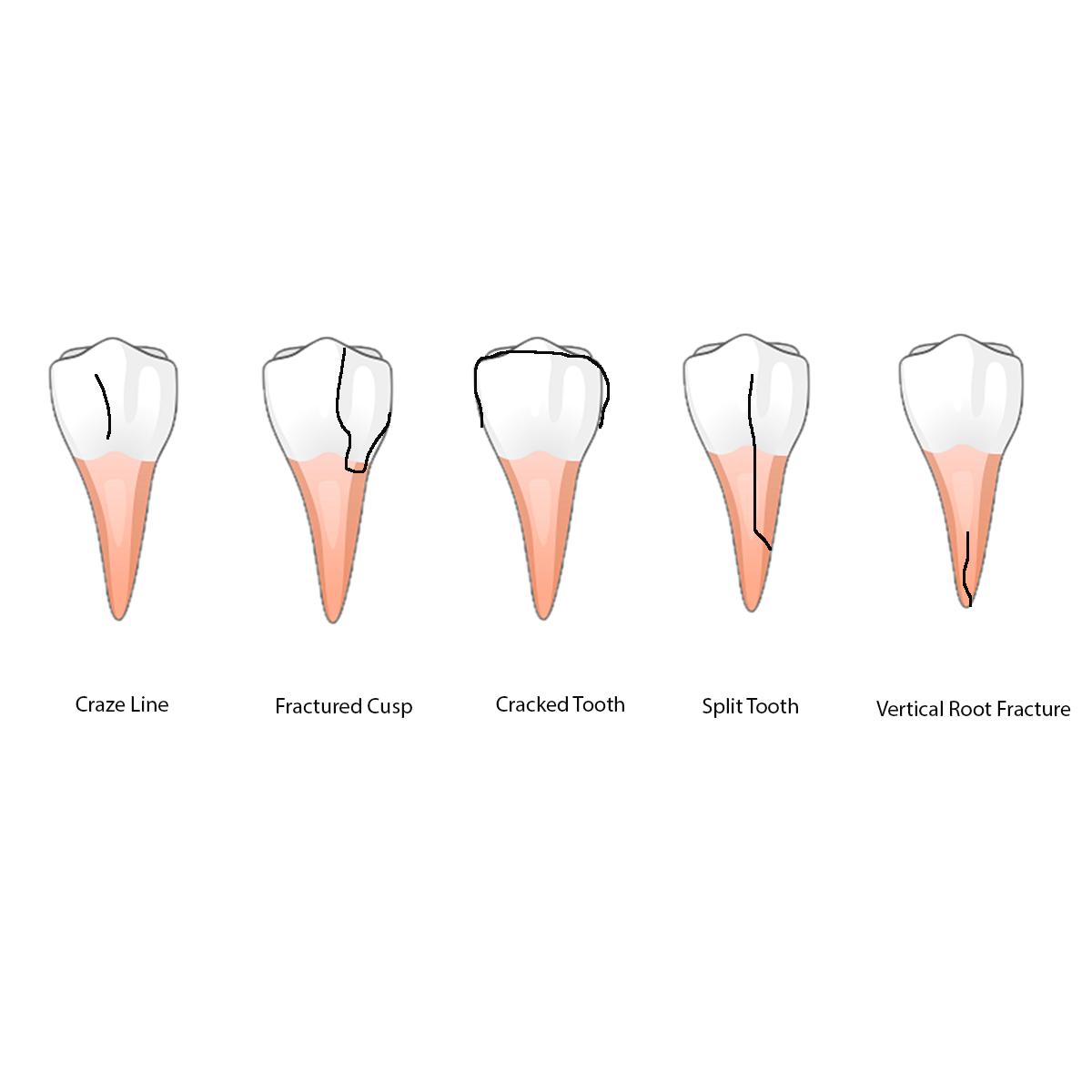
Etiology, Prevalence, and Classification of Cracked Tooth Syndrome (CTS), Literature Review
Abstract
Background: Dentists all around the world struggle with diagnosing cracked tooth syndrome. For most cases, detection of this issue is the main problem since the crack can be hidden under fillings or on the enamel surface which is too small in size to be detected with the naked eye or can be part of a root that sometimes is not visually evident. Nowadays, using dental magnifications (Dental Loupes, Dental Operating Microscope (DOM)) in everyday practice makes it possible to discover lots of dental anatomical structures and make the treatment outcome more predictable than ever. The above-mentioned devices are also used for detecting tooth cracks, but they are not the only tools that can be used to diagnose CTS.
Aim: This article aims to explore cracked tooth syndrome, describe existing classification- compare contrast discuss challenges with diagnosis, and bring dental professionals’ attention to this phenomenon. Due to outdated and limited existing literature about CTS, this article attempts to fill in the informational gap, while creating an incentive for dentists and scholars to further explore this topic.
Methods: to analyze CTS in-depth descriptive qualitative research method, specifically an existing literature review was applied.
Collected information includes scholars’ research from: PubMed, ResearchGate, Springer, Wiley, Elsevier, JoE, FDI World Dental Federation, European Journal of Prosthodontics and Restorative Dentistry, NCBI National Library of Medicine, The Journal of Prosthetic Dentistry (JPD), JADA.
Results: The results of the research show that a lack of knowledge about CTS, its etiology, and prevalence remains a challenge. Absence of the evidence-based scientific research in Georgia limits professionals to be vigilant about the CTS and provide the relevant treatment plan for it. Additionally, the article identifies the recent classification of CTS, and it underscores the importance of further studies to be done about CTS.
Conclusions: CTS classification helps us differentiate cases and create tailored approaches based on the individual needs of the patient. To make a correct diagnosis it is crucial to be aware of the classification to make a correct diagnosis which will lead to a correct treatment plan in the future. The prevalence among the different demographics of patients is not studied well enough and there is a lack of recent statistical data regarding its incidence.
Keywords
Full Text:
PDFReferences
Mamoun JS, Napoletano D. Cracked tooth diagnosis and treatment: An alternative paradigm. European journal of dentistry. 2015 Apr;9(02):293-303.
https://www.fdiworlddental.org/sites/default/files/2022-07/FDI%20Cracked%20Tooth%20Syndrome.pdf
Castellucci A. Endodontics: 2 Volume Set. Edizioni LSWR; 2022 Dec 13.
Hilton TJ, Funkhouser E, Ferracane JL, Gordan VV, Huff KD, Barna J, Mungia R, Marker T, Gilbert GH, National Dental PBRN Collaborative Group. Associations of types of pain with crack-level, tooth-level and patient-level characteristics in posterior teeth with visible cracks: Findings from the National Dental Practice-Based Research Network. Journal of dentistry. 2018 Mar 1;70:67-73.
Korkut B, Bayraktar ET, Tağtekin D, Çolak H, Özcan M. Cracked Tooth Syndrome and Strategies for Restoring. Current Oral Health Reports. 2023 Dec;10(4):212-22.
Rivera E, Walton R. Detection and Treatment of Various Longitudinal Tooth Fractures Endodontics. Cracking the Cracked Tooth Code. Colleagues for Excellence Summer. 2008.
Segarra MS, Shimada Y, Sadr A, Sumi Y, Tagami J. Three-dimensional analysis of enamel crack behavior using optical coherence tomography. Journal of dental research. 2017 Mar;96(3):308-14.
Cameron CE. Cracked-tooth syndrome. The Journal of the American Dental Association. 1964 Mar 1;68(3):405-11.
Cameron CE. The cracked tooth syndrome: additional findings. Journal of the American Dental Association (1939). 1976 Nov 1;93(5):971-5.
Banerji S, Mehta SB, Millar BJ. Cracked tooth syndrome. Part 1: aetiology and diagnosis. British dental journal. 2010 May 22;208(10):459-63.
Hiatt WH. Incomplete crown‐root fracture in pulpal‐periodontal disease. Journal of periodontology. 1973 Jun;44(6):369-79.
Roh BD, Lee YE. Analysis of 154 cases of teeth with cracks. Dental traumatology. 2006 Jun;22(3):118-23.
Yap RC, Alghanem M, Martin N. A narrative review of cracks in teeth: Aetiology, microstructure and diagnostic challenges. Journal of Dentistry. 2023 Nov 1;138:104683.
Abou-Rass M. Crack Lines: The Precursors of Tooth Fractures--Their Diagnosis and Treatment. Quintessence international. 1983 Apr 1;14(4).
Seo DG, Yi YA, Shin SJ, Park JW. Analysis of factors associated with cracked teeth. Journal of endodontics. 2012 Mar 1;38(3):288-92.
Liao WC, Tsai YL, Chen KL, Blicher B, Chang SH, Yeung SY, Chang MC, Jeng JH. Cracked teeth: Distribution and survival at 6 months, 1 year and 2 years after treatment. Journal of the Formosan Medical Association. 2022 Jan 1;121(1):247-57.
Kahler W. The cracked tooth conundrum: terminology, classification, diagnosis, and management. American journal of dentistry. 2008 Oct 1;21(5):275.
Lee J, Kim S, Kim E, Kim KH, Kim ST, Jeong Choi Y. Survival and prognostic factors of managing cracked teeth with reversible pulpitis: A 1‐to 4‐year prospective cohort study. International Endodontic Journal. 2021 Oct;54(10):1727-37.
Yeh CJ. Fatigue root fracture: a spontaneous root fracture in non-endodontically treated teeth. British dental journal. 1997 Apr;182(7):261-6.
Borelli P, Alibrandi P. Unusual horizontal and vertical root fractures of maxillary molars: an 11-year follow-up. Journal of Endodontics. 1999 Feb 1;25(2):136-9.
Tsai YL, Liao WC, Wang CY, Chang MC, Chang SH, Chang SF, Chang CW, Huang YD, Chan CP, Jeng JH. Horizontal root fractures in posterior teeth without dental trauma: tooth/root distribution and clinical characteristics. International endodontic journal. 2017 Sep;50(9):830-5.
Yang SF, Chen YW, Tsai CL, Cheng HC, Wu SL, Tamse A, Ho YC. Incidence and contributing factors of non-root canal treated teeth with chronic fatigue root fracture: A cross-sectional study. Journal of the Formosan Medical Association. 2023 Dec 1;122(12):1338-44.
Hasan S, Singh K, Salati N. Cracked tooth syndrome: overview of literature. International Journal of Applied and Basic Medical Research. 2015 Sep 1;5(3):164-8.
Ricucci D, Siqueira Jr JF, Loghin S, Berman LH. The cracked tooth: histopathologic and histobacteriologic aspects. Journal of endodontics. 2015 Mar 1;41(3):343-52.
Refbacks
- There are currently no refbacks.
ISSN: 2346-8491 (online)